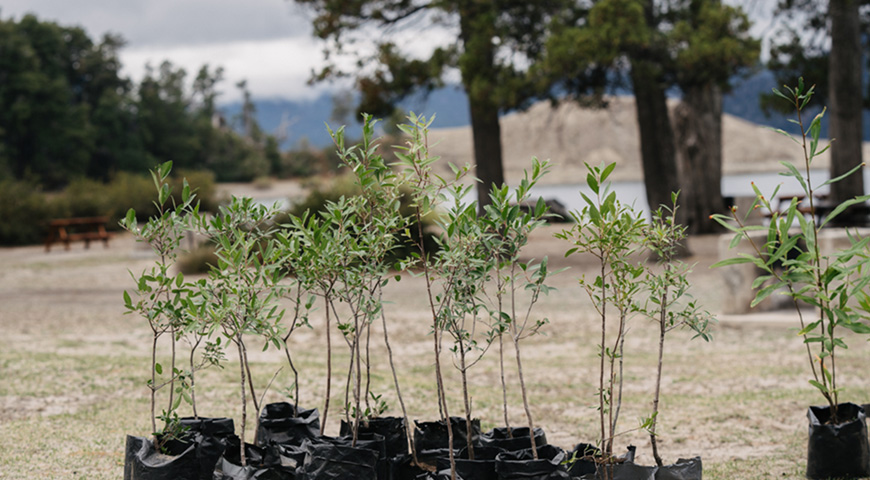
Our footprint carbon offset 2019/2020
March 17, 2023
Forests of the Future
March 21, 2023On this occasion, we would like to share the experience of Guido Piotrkowski, photographer and journalist, who made an article of his experience “Trekking to Cerro Bellavista” for the national newspaper La Nación. The full article in the following link: https://www.lanacion.com.ar/turismo/bariloche-cuesta-arriba-por-el-cerro-bellavista-en-busca-de-una-vista-privilegiada-nid31012021/
We start at 9 in the morning, when Carlos Pelli, an experienced mountain guide, picks us up and predicts a great hike: “It is the best view you are going to have of Bariloche and the entire region”
At the 12km of Avenida Bustillo, we leave behind the view of Nahuel Huapi and turn off along the old road that leads to Cerro Catedral until the detour that leads to Casa de Piedra stream. Two kilometers later we enter Tambo de Báez, the zero kilometer of this trail.
The first meters of the trail are shared with the trail that leads to the San Martín Refuge in the Jakob lagoon, until you reach a sign that indicates the detour to the right to go to Bellavista. The path is steep from the start, and I wonder if that is how the rest of this path will be, which has no technical difficulties. From the start we enter this deep green orchard that is the Andean Patagonian forest.
The humid forest and its multiplicity of species are shown from kilometer zero, there are coihues morrudos, the typical mountain cypress and colihues cañas. We enter the undergrowth, the fantastic forest within the forest, mined by creeping vegetation … we pay attention to birds and animals, although it is almost impossible to see four-legged critters, such as a deer, although you can see traces, or the strange huiña cat, endemic to the region. But some birds do fly overhead, such as the famous chucao, and some small, fast and elusive huet huet. Pelli indicates that there are also carpenters, rayaditos and loicas; chimangos and caranchos. And further up, with luck we will be able to see black or red headed jote, white jote, and the condor.
We leave the rainforest and stop in a clearing with a view of Moreno lake … the ground becomes stony, there are no trees above us, but some lengas and short ñires, and creeping shrubs. We are in the transition forest, the wind is noticeable and the clouds are still there. We put on our coats again.
It’s been two hours of hiking and the slope never smoothed out. We stop to take a breath in front of new panoramas, now an intense green valley makes its way between the mountains, towards the other side of the lake. The next step is the most critical, you have to cross a steep and slippery scree. We climb clinging to the lengas to avoid sliding downhill, when a condor surprises us as we pass by. It seems to fly in slow motion, although it does so very fast. Fly close, very close.
Shortly after, we stop at El Filo, the last stretch of the transition from the forest to the high mountains. From there, we sighted for the first time the triangle that forms the summit of Bellavista. We recover energy with some cereal bars, some fruit and water. Here we go. You have to bundle up a bit more, the wind and cold intensify, although a blue sky peeks through the clouds. The landscape becomes more desert.
We walk a while more, always uphill, now along a ridge overlooking Nahuel Huapi on one side and a valley on the other side. The summit is there, closer and closer.
A few minutes later, amidst thunderous silence, we reached the top. We stand on the highest stone, which offers a 360 ° panoramic view. Every so often, the echoes of the city come with the wind. We see the Nahuel, the Moreno, the center and beyond, to Dina Huapi, the neighboring town. We pose for snapshots, we extend our arms, we look at the sky.



